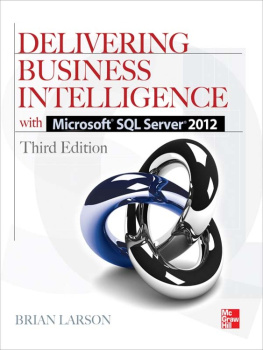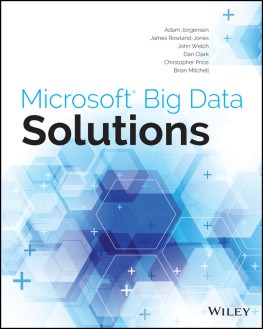Benjamin Weissman
Nurnberg, Germany
Enrico van de Laar
Drachten, The Netherlands
Any source code or other supplementary material referenced by the author in this book is available to readers on GitHub via the books product page, located at www.apress.com/9781484251096 . For more detailed information, please visit http://www.apress.com/source-code .
ISBN 978-1-4842-5109-6 e-ISBN 978-1-4842-5110-2
https://doi.org/10.1007/978-1-4842-5110-2
Benjamin Weissman and Enrico van de Laar 2019
This work is subject to copyright. All rights are reserved by the Publisher, whether the whole or part of the material is concerned, specifically the rights of translation, reprinting, reuse of illustrations, recitation, broadcasting, reproduction on microfilms or in any other physical way, and transmission or information storage and retrieval, electronic adaptation, computer software, or by similar or dissimilar methodology now known or hereafter developed.
Trademarked names, logos, and images may appear in this book. Rather than use a trademark symbol with every occurrence of a trademarked name, logo, or image we use the names, logos, and images only in an editorial fashion and to the benefit of the trademark owner, with no intention of infringement of the trademark. The use in this publication of trade names, trademarks, service marks, and similar terms, even if they are not identified as such, is not to be taken as an expression of opinion as to whether or not they are subject to proprietary rights.
While the advice and information in this book are believed to be true and accurate at the date of publication, neither the authors nor the editors nor the publisher can accept any legal responsibility for any errors or omissions that may be made. The publisher makes no warranty, express or implied, with respect to the material contained herein.
Distributed to the book trade worldwide by Springer Science+Business Media New York, 233 Spring Street, 6th Floor, New York, NY 10013. Phone 1-800-SPRINGER, fax (201) 348-4505, e-mail orders-ny@springer-sbm.com, or visit www.springeronline.com. Apress Media, LLC is a California LLC and the sole member (owner) is Springer Science + Business Media Finance Inc (SSBM Finance Inc). SSBM Finance Inc is a Delaware corporation.
Introduction
When we first started talking about writing a book about SQL Server Big Data Clusters, it was still in one of its first iterations. We both were very excited about all the technologies included in the product and the way it could potentially change the field of data processing and analytics. Little did we know how many changes the product was going to receive while we were writing this. Ultimately, this resulted in us almost rewriting the entire book on a monthly basis. While this was a massive endeavor, it also allowed us to follow, and document, everything the product went through during its development.
SQL Server Big Data Clusters is an incredibly exciting new platform. As mentioned in the preceding paragraph, it consists of a wide variety of different technologies that make it work. Kubernetes, HDFS, Spark, and SQL Server on Linux are just some of the major players inside a Big Data Cluster. Besides all these different products combined into a single product, you can also deploy it on-premises or in the Azure cloud depending on your use-case. As you can imagine, it is near impossible for a single book to discuss all these different products on an in-depth level (as a matter of fact, there are plenty of books available that do go into all the tiny details for each individual product that is part of a Big Data Cluster like Spark or SQL Server on Linux). For this reason, we have opted for a different approach for this book and will focus more on the architecture of Big Data Clusters in general and practical examples on how to leverage the different approaches on data processing and analytics Big Data Clusters offer.
With this approach we believe that, while you read this book, you will be able to understand what makes Big Data Clusters tick, what its use-cases are, and how to get started with deploying, managing, and working with a Big Data Cluster. In that manner this book tries to deliver useful information that can be used for the various job roles that deal with data, from Data Architects that would like more information on how Big Data Clusters can serve as a centralized data hub, Database Administrators that want to know how to manage and deploy databases to the cluster, Data Scientists that want to train and operationalize machine learning models on the Big Data Cluster, and many more different roles. If you are working with data in any way, this book should have something for you to think about!
Book Layout
We split this book into eight separate chapters that each highlight a specific area, or feature, of Big Data Clusters.
Chapter: What Are Big Data Clusters?. In this chapter, we will describe a high-level overview of SQL Server Big Data Clusters and their various use-cases.
Chapter: Big Data Cluster Architecture. We will go into more depth about what makes up a Big Data Cluster in this chapter, describing the various logical areas inside a Big Data Cluster and looking how all the different parts work together.
Chapter: Installation, Deployment, and Management of Big Data Clusters will walk you through the first steps of deploying a Big Data Cluster using an on-premises or cloud environment and describes how to connect to your cluster, and finally what management options are available to manage and monitor your Big Data Cluster.
Chapter: Loading Data into Big Data Clusters. This chapter will focus on data ingression from various sources into a Big Data Cluster.
Chapter: Querying Big Data Clusters Through T-SQL focuses on working with External Tables through Polybase and querying your data using T-SQL statements.
Chapter: Working with Spark in Big Data Clusters. While the previous chapter focused mostly on using T-SQL to work with the data on Big Data Clusters, this chapter puts the focus on using Spark to perform data exploration and analysis.
Chapter: Machine Learning on Big Data Clusters. One of the main features of Big Data Clusters is the ability to train, score, and operationalize machine learning models inside a single platform. In this chapter we will focus on building and exploiting machine learning models through SQL Server In-Database Machine Learning Services and Spark.
Chapter: Create and Consume Big Data Cluster Apps. In the final chapter of this book, we are going to take a close look at how you can deploy and use custom applications through the Big Data Cluster platform. These applications can range from management tasks to providing a REST API to perform machine learning model scoring.

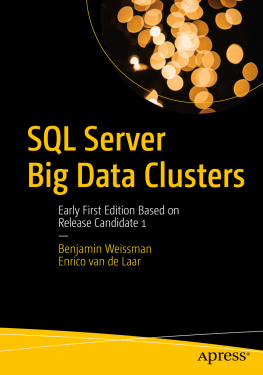
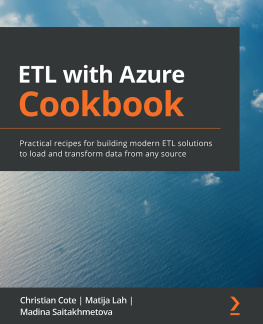
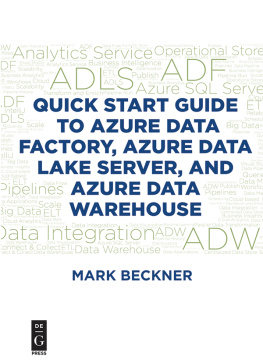

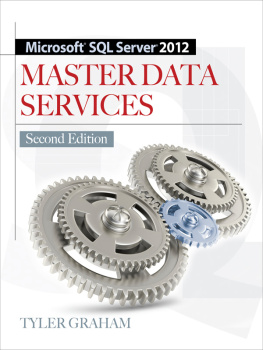
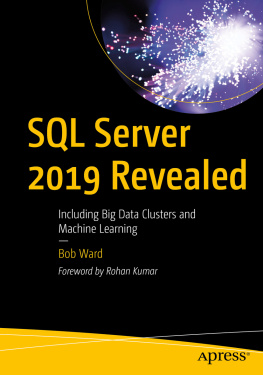

![Dejan Sarka [Dejan Sarka] - Data Science with SQL Server Quick Start Guide](/uploads/posts/book/119640/thumbs/dejan-sarka-dejan-sarka-data-science-with-sql.jpg)

